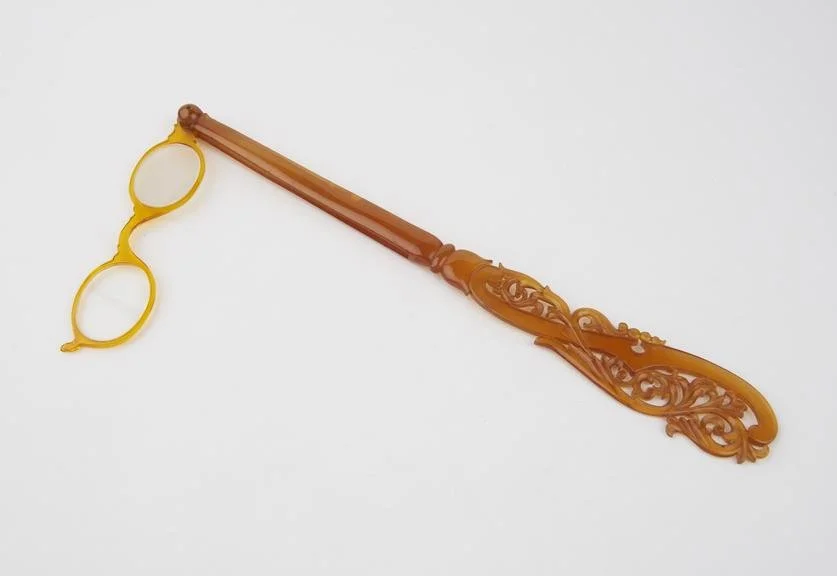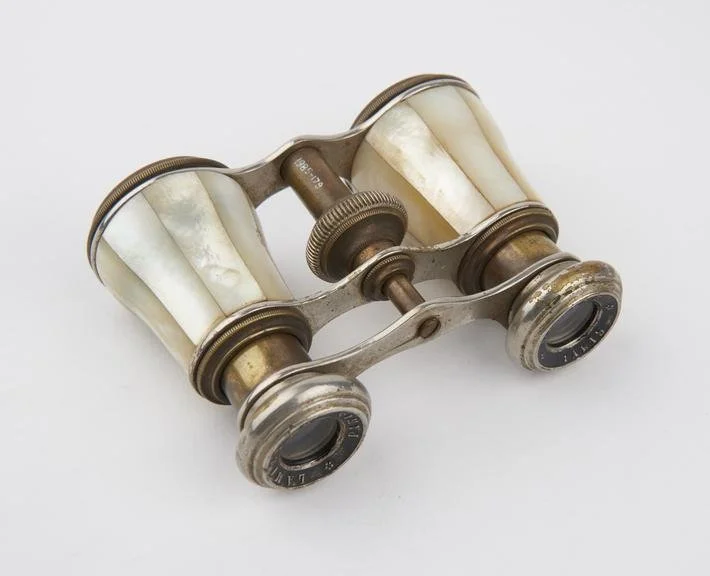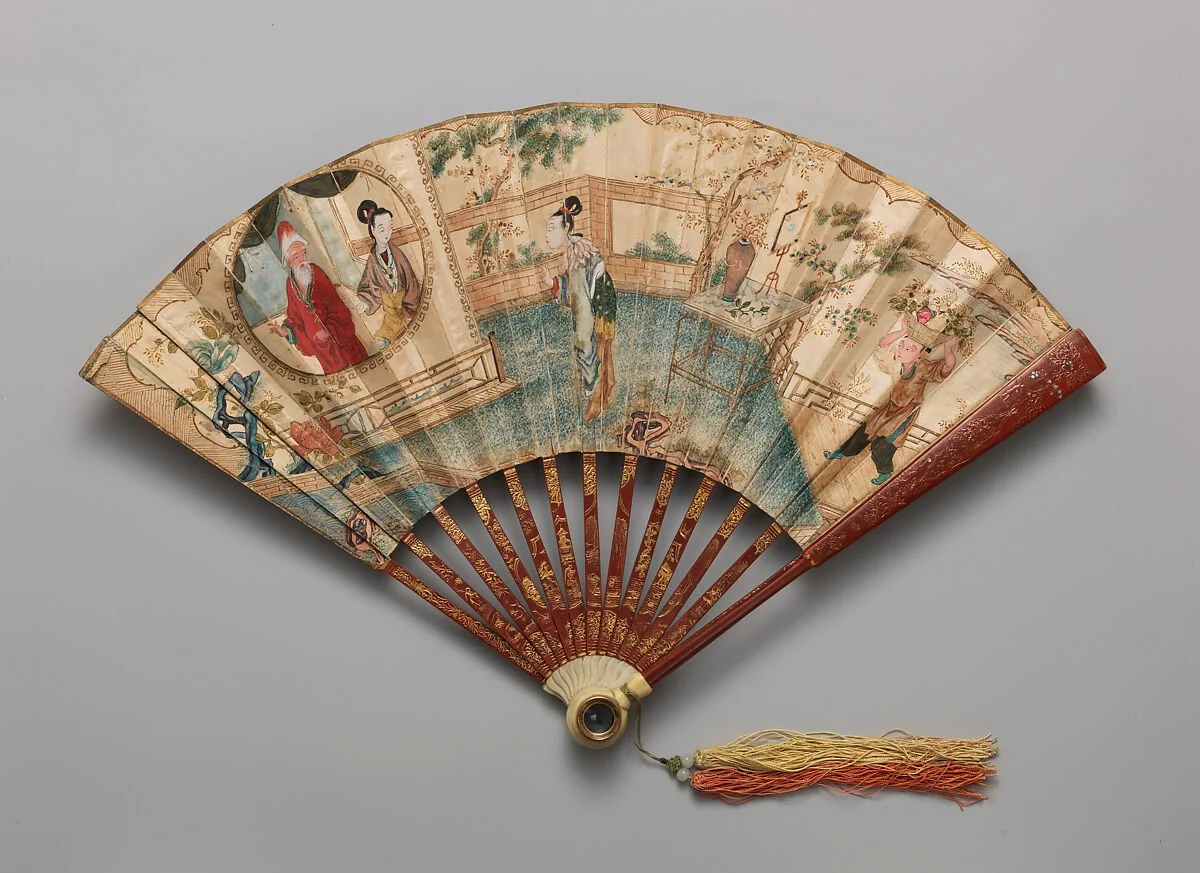How Observation Became a Fashion Statement
"Lady with a Lorgnette" by artist József Borsos (1856)
Stirring up the crowd in scandal, gossip, and fashion? Turns out Marie Antoinette was the perfect culprit.
Originally only for men with monocles as accessory, visual aids would became a staple for women in the 18th century with the invention of the lorgnette—a pair of eyeglasses or opera glasses with a handle—ushering in a new wave of flirtation, etiquette, and a sign of being in society beyond its created use. The lorgnette with its name derived from the French word “lorgner” meaning to ogle, to leer, to covet, to look at using a monocle or lorgnette, would not only aid in their ability to see the emotions performed onstage but encourage the onlooking of the appearances and behavior of those in the theatre hall around them. These other “artistic” interests would inspire new designs as found with the “jealousy lorgnette.”
Ornate plastic tortoiseshell, long handled lorgnette spectacles (Courtesy of Science Museum Group)
“Like all the early lorgnettes, it was constructed for one eye only and resembled one half of a fair-sized modern opera glass. Besides having a lens at each end, the jealousy lorgnette contained an oblique mirror through which, when looking into it from a hole hidden in a decorative part in the side of the device, one could see who was behind or to one side of the viewer.”
-Vision Aids in America: A Social History of Eyewear and Sight Correction by Author Kerry Segrave
Meanwhile the image of opera glasses you most likely have at the front of your mind were notably first used in 1823 in Vienna and not until the later half of the 19th century would become an essential accessory to accompany oneself to the theatre with.
Pair of opera glasses with mother-of-pearl mounts (Courtesy of Science Museum Group)
In the throws of what was fashionable during the 18th century, France would deepen using accessory as language in high society through the creation of the fan lorgnette, or opera-glass fans, as credited with Marie Antoinette herself as the inventor, where the lorgnette itself was designed to be embedded within the fan surrounded by the art intertwining, becoming a must for anyone invested in gossip and scandal as noted in early 20th century magazine Hygeia about the 18th century lorgnette:
“…the more aroused and controversial public opinion became, the more popular grew the lorgnette of every type and in every conceivable form; and whoever laid even the least claim to distinction or style sported a variety of them.”
With nobility like Marie Antionette, it is no wonder why everyone in France would dawn such a glass as the lorgnette.
Chinese, for the European Market Mid-18th century (Courtesy of The Metropolitan Museum of Art)
Eventually in the late 19th and 20th century the lorgnette would become a tool that existed as more accessibility rather than scandalous than it was once found centuries before in the public eye, becoming collapsible, less adorned, and more practical for the average person, trickled down from the use of nobility to the hands of you and I, and oh how the mighty Marie had fallen.
Pocoscope Folding Opera Glasses (Courtesy of The Cyril Kett Optometry Museum and Archive)
Research Credits:
“Antique Late 1800’s to Early 1900’s. Marchand Paris Opera Glasses.” n.d. Iapello Arts & Antiques. https://www.iapello.com/en-us/products/antique-late-1800s-to-early-1900s-marchand-paris-opera-glasses-1.
“Archive - Pocoscope Folding Opera Glasses - Optometry Museum & Archive.” n.d. https://museum.aco.org.au/archive/2979-pocoscope-folding-opera-glasses#:~:text=Folding%20opera%20glasses%20that%20were,glasses%20date%20from%20the%201890s.
“———.” n.d. https://museum.aco.org.au/archive/2979-pocoscope-folding-opera-glasses.
“Lorgnette Fan With Scene of Figures in a Courtyard Garden - Chinese, for the European Market - the Metropolitan Museum of Art.” n.d. https://www.metmuseum.org/art/collection/search/209599.
Matthews, Mimi. 2021. “The History of the Lorgnette.” Mimi Matthews (blog). July 14, 2021. https://www.mimimatthews.com/2015/09/20/the-history-of-the-lorgnette/.
“Ornate Plastic Tortoiseshell, Long Handled Lorgnette Spectacles. | Science Museum Group Collection.” n.d. https://collection.sciencemuseumgroup.org.uk/objects/co538828/ornate-plastic-tortoiseshell-long-handled-lorgnette-spectacles.
“Pair of Opera Glasses With Mother-of-pearl Mounts | Science Museum Group Collection.” n.d. https://collection.sciencemuseumgroup.org.uk/objects/co3271/pair-of-opera-glasses-with-mother-of-pearl-mounts.





